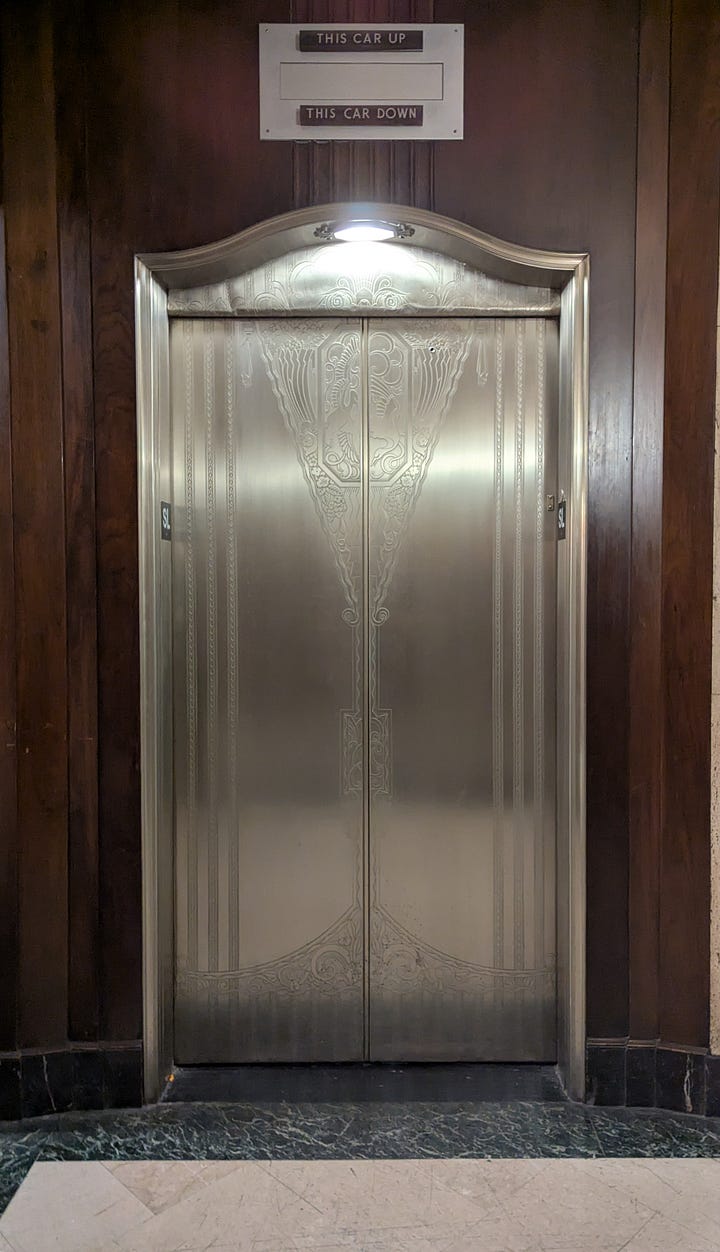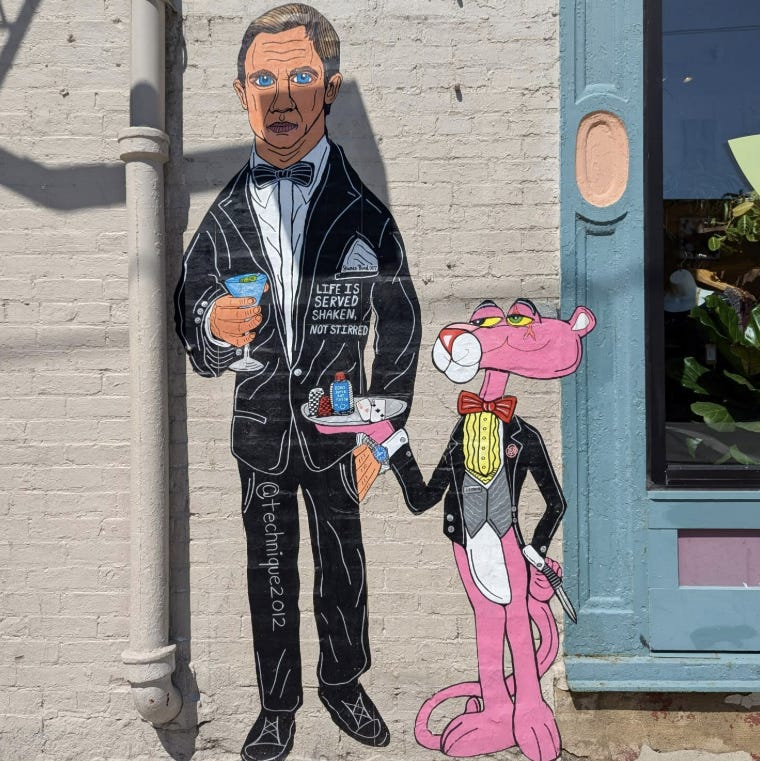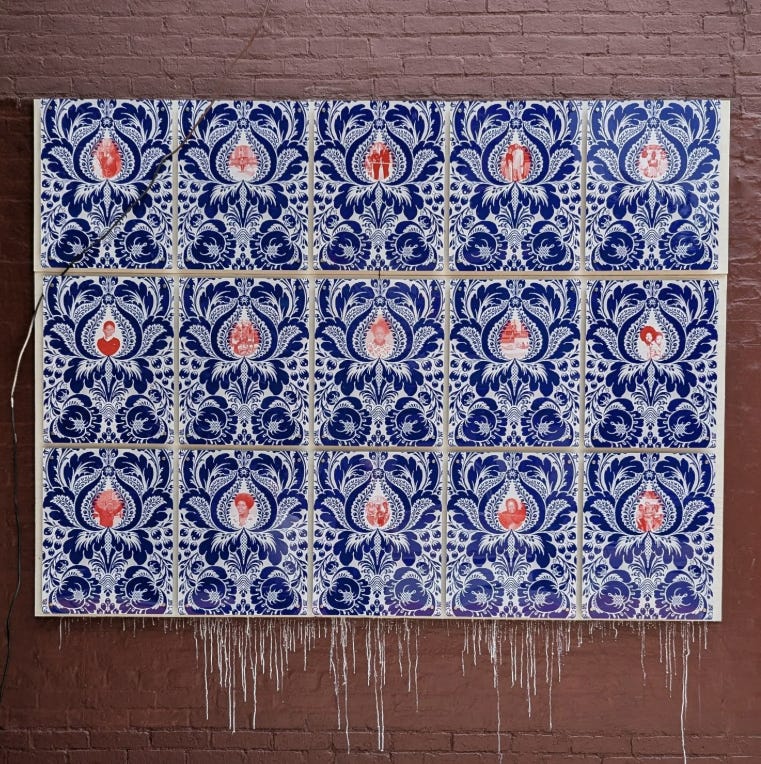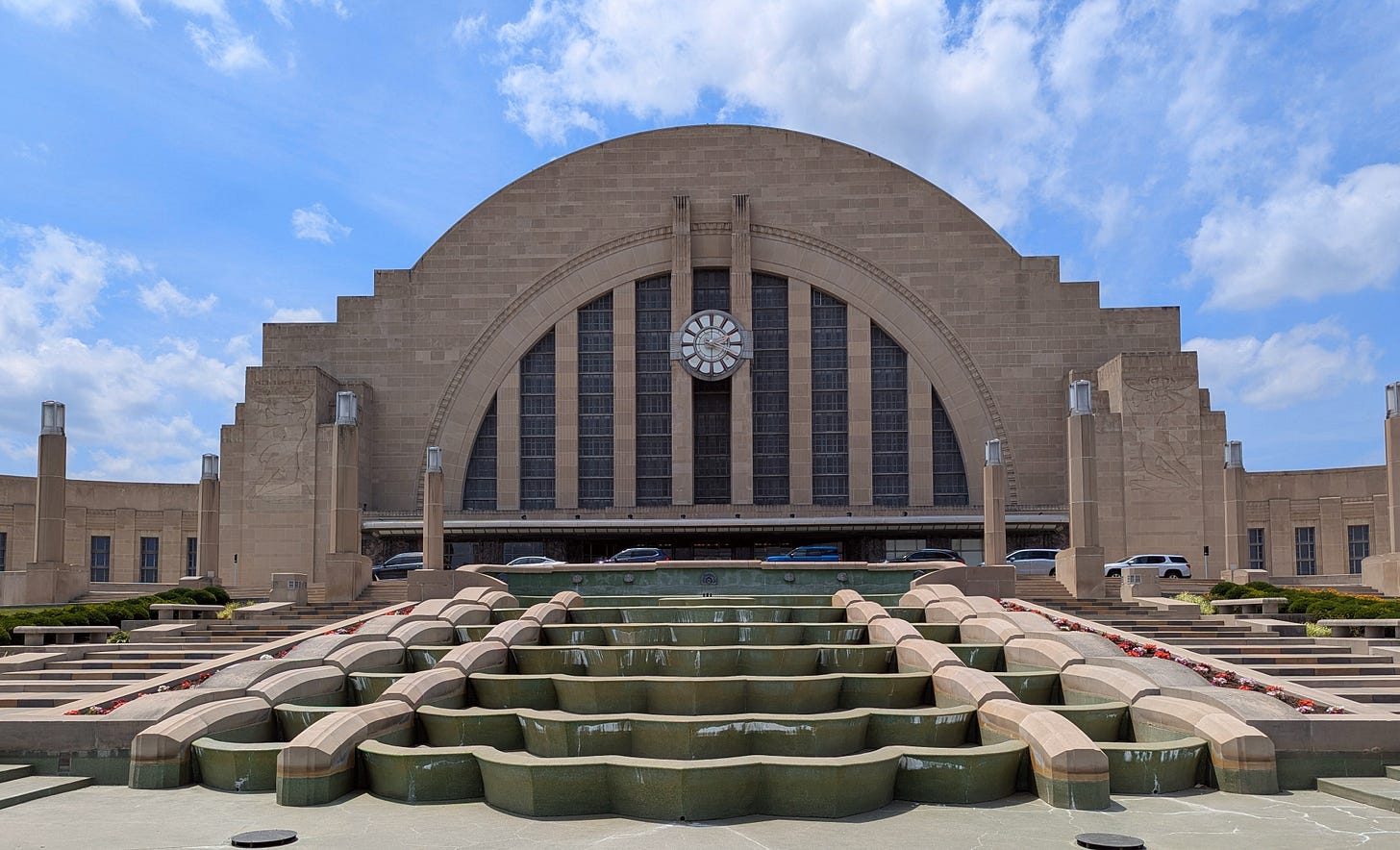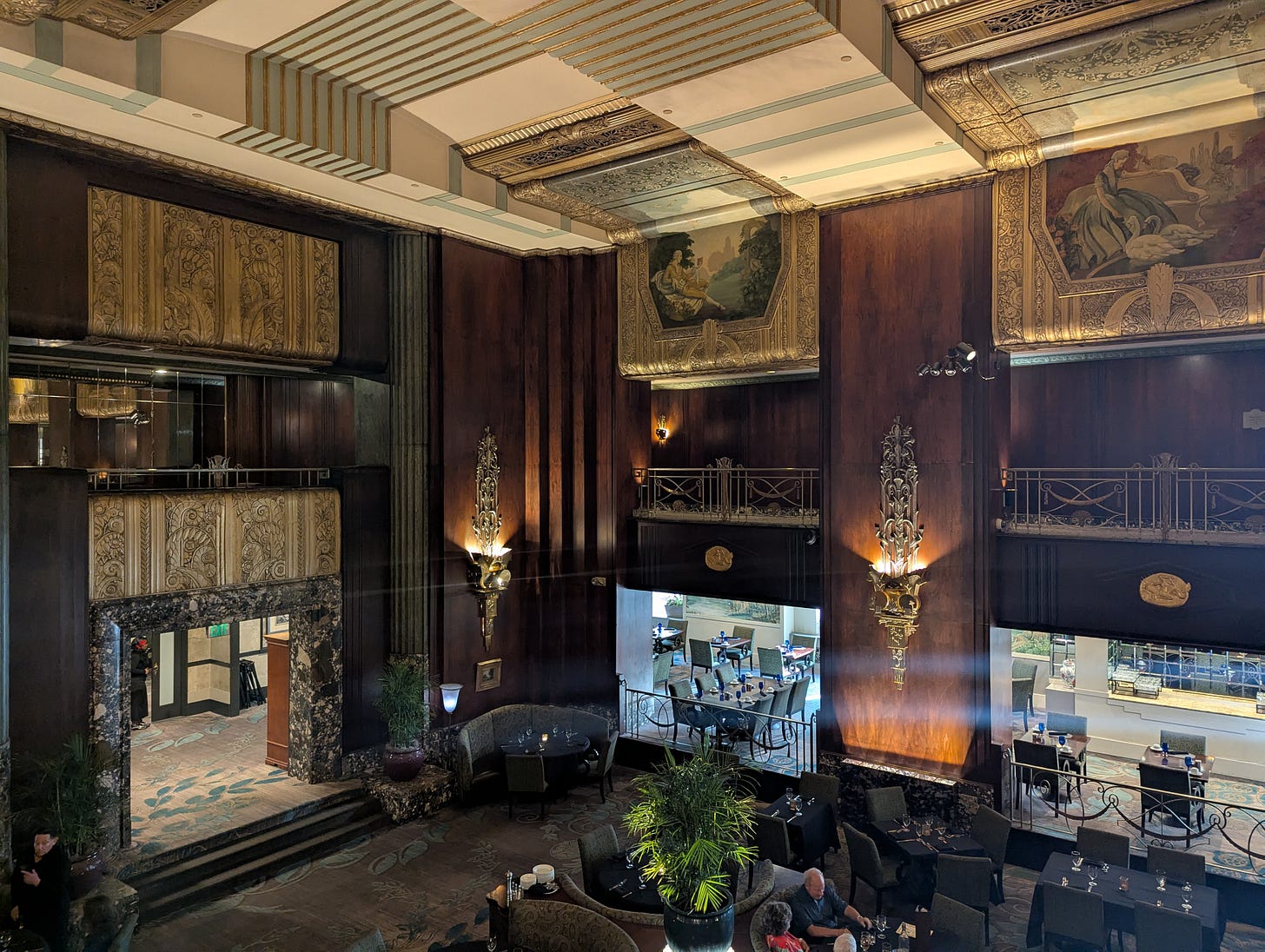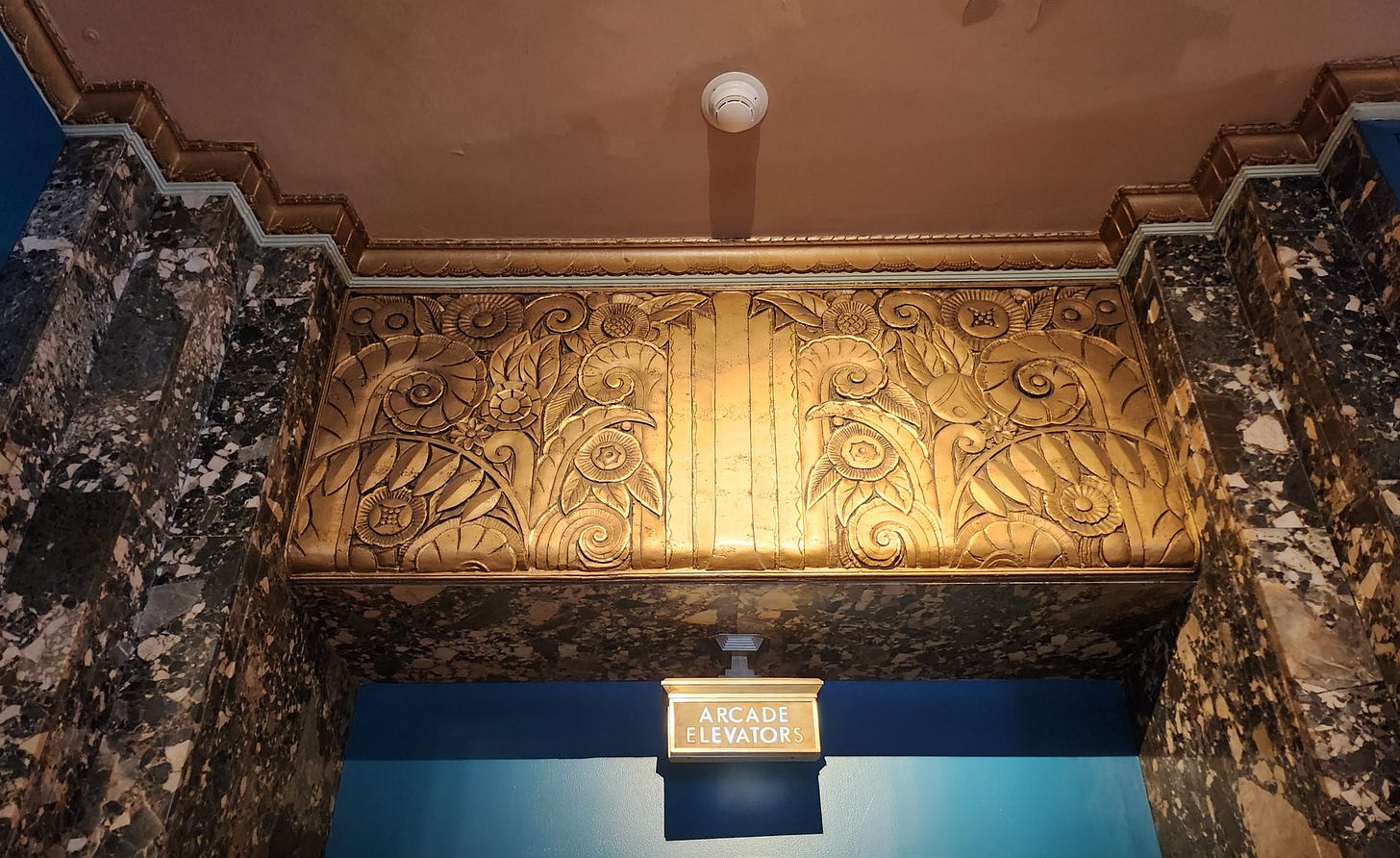Cincinnati: Come for the art, stay for the architecture
Art Deco gems abound
If the Queen City isn’t on your list of places to visit, it should be. We go pretty much annually to visit family. And, while those visits are the highlight, what we get to do while we’re there equals any great city.
Well-known as a place that fosters art, we saw three great shows at the Cincinnati Art Association’s Weston Art Gallery: Hannah Parrett (grass crunching); Clive Moloney (Between Trees); Erika NJ Allen (This is Not a Banana Republic--A Manifesto of Empire Domination, the Immigration Experience, and Empathy).
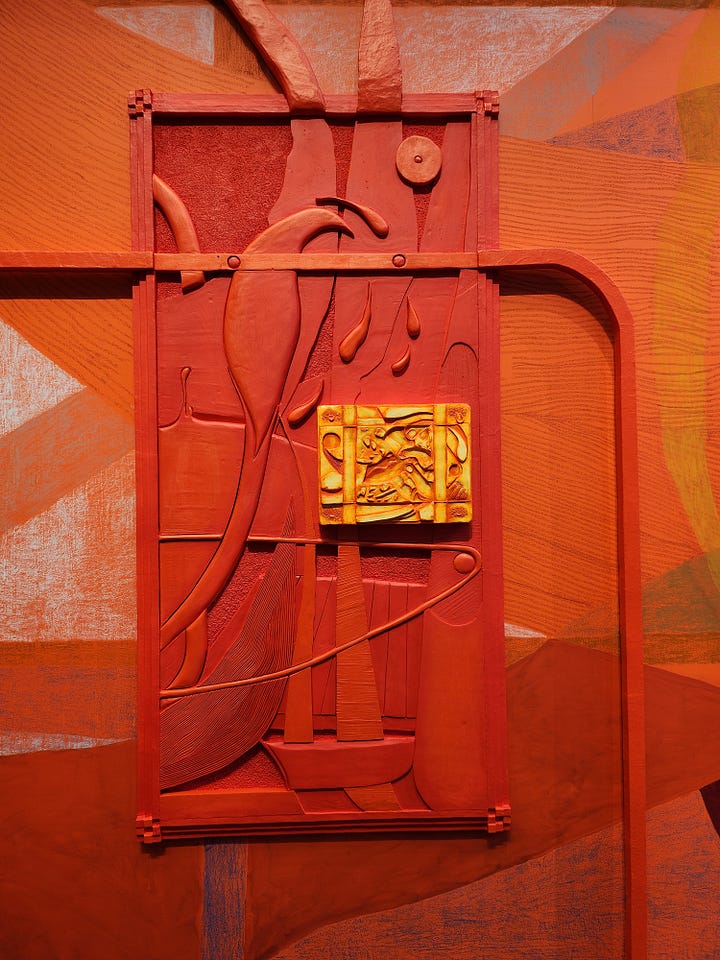
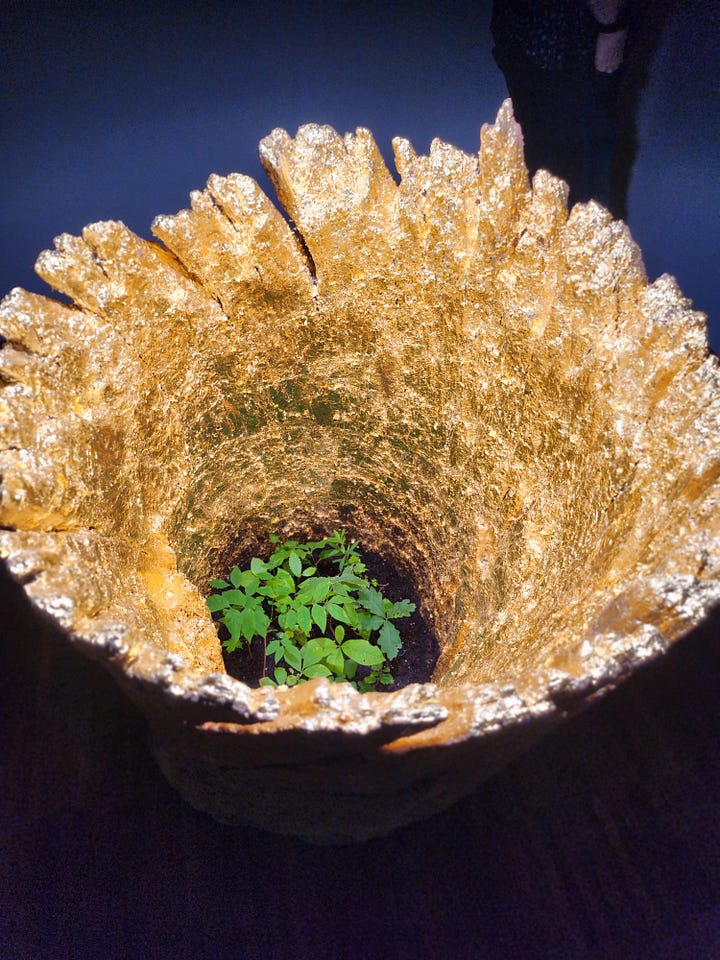
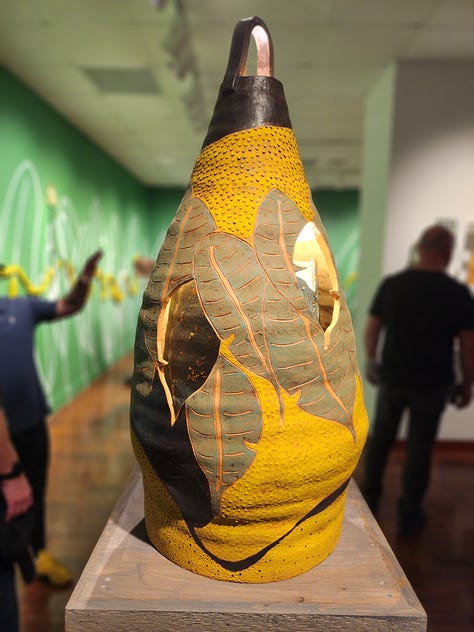
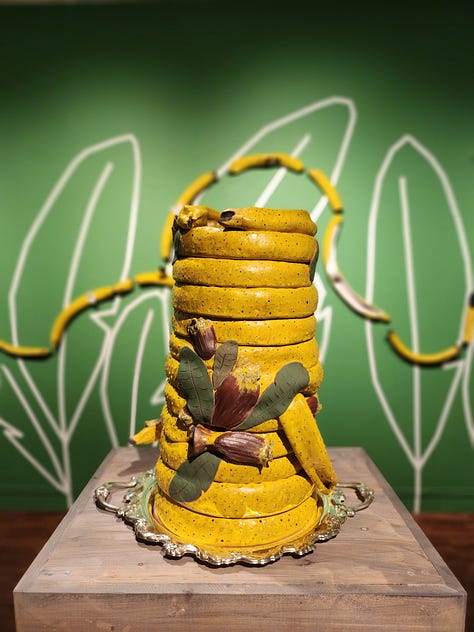
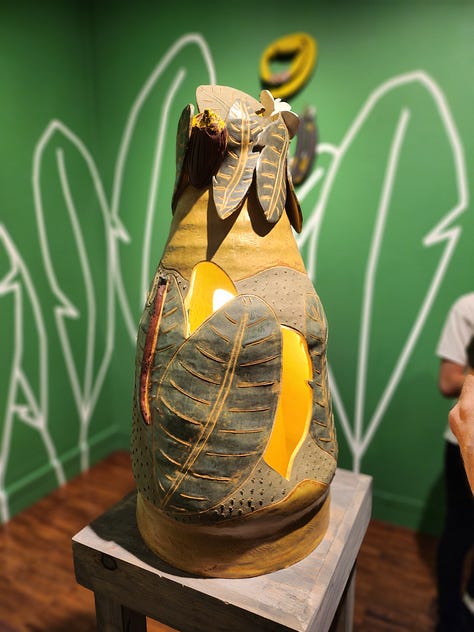
The bonus at the Weston was the cadre of middle school docents who were giving tours of the exhibits. More cultural institutions should deploy 12- and 13-year old docents. They were incredibly well-informed, engaging and simply delightful.
There is also a great public art scene outdoors in Cincinnati, which includes Arte Agora, like this wheat paste piece by technique2012.
Cincinnati also has plenty of public art, put up with permission. This collection of seeming Delft tiles by Terence Hammonds employs portraits in red.
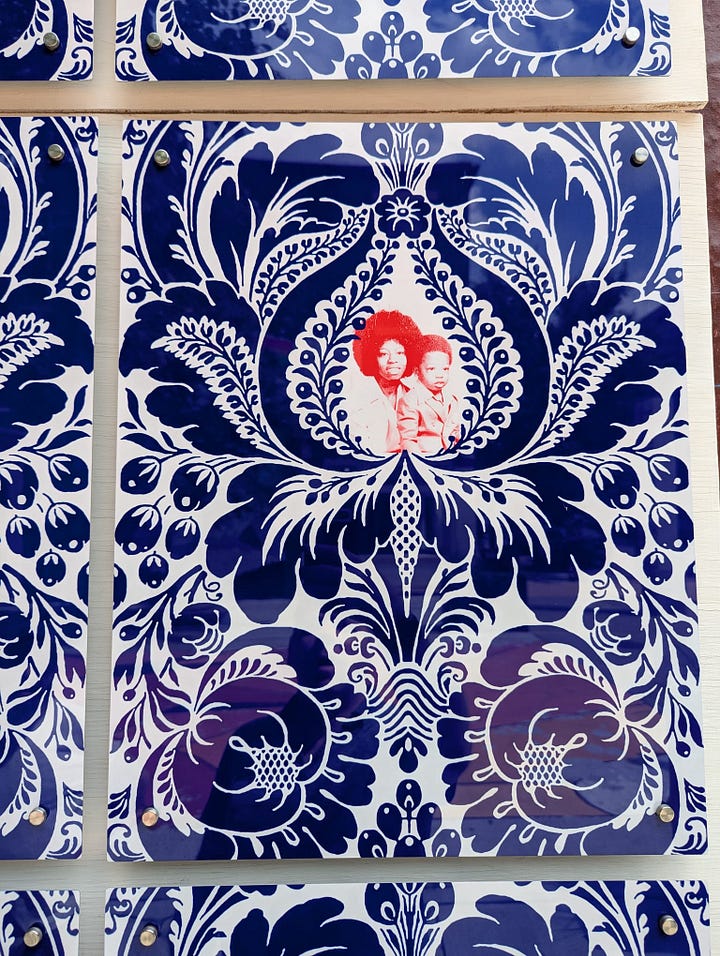
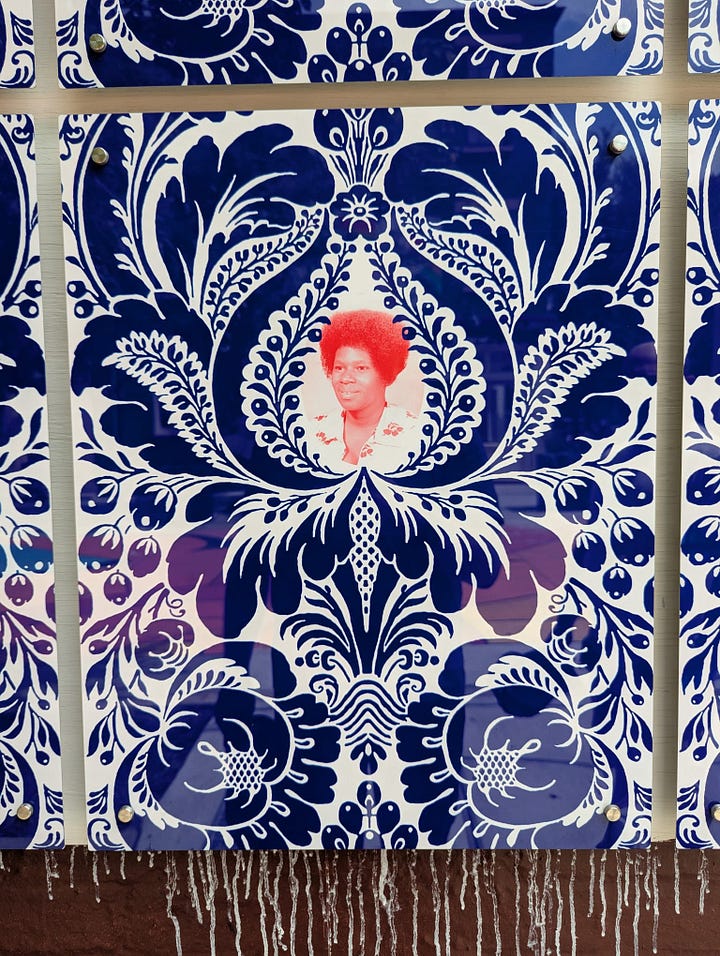
And while we’ve been to Cincinnati many times, this was the first time that we ever saw two amazing Art Deco gems. The first, Union Terminal, was built as the city’s main cross-country train station, just as train travel in the U.S. was waning. Now housing a number of history-related museums, Union Terminal is a textbook example of American Art Deco. Like many buildings of that era—and particularly with rail travel in major decline, the building was in serious disrepair before a major renovation saved this architectural masterpiece.
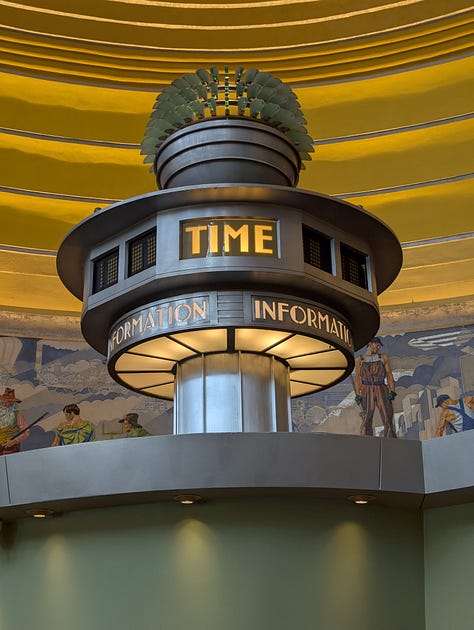
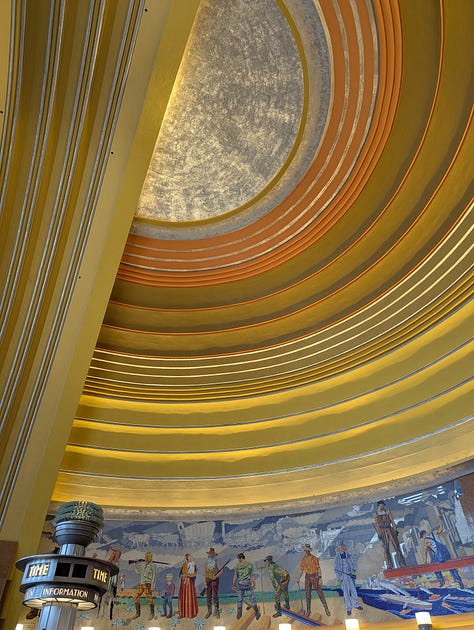
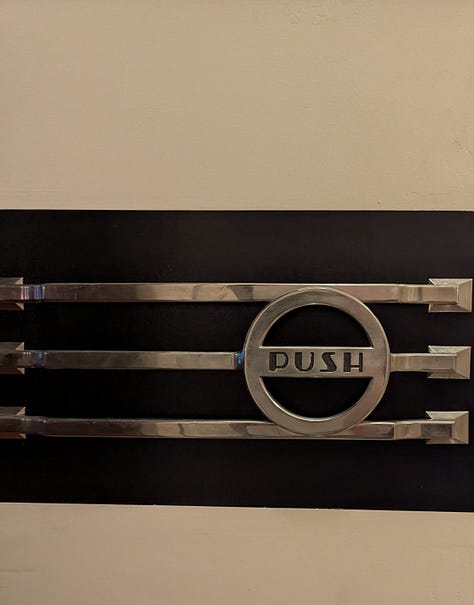
Meanwhile, less than two miles away, is the Netherland Plaza Hotel, which is an excellent example of French Art Deco. Here’s how the difference between these architectural styles breaks down:
Art Deco
Style: Bold geometry, vertical emphasis, streamlined forms, dramatic zigzags and chevrons.
Design Language: Strong, simple forms with mass production in mind.
Use of Ornament: Often decorative but adapted for scalability; ornament was more angular and repetitive.
French Art Deco
Style: Luxurious, refined, and classically elegant. Often more curved, floral, and intricate than its American counterpart.
Design Language: Emphasis on craftsmanship and artistic detail, sometimes bordering on the ornamental excess of Art Nouveau.
Use of Ornament: Rich in artisanal touches—marquetry, lacquer, inlay, and bronze accents.
Also full of stunning details, go for a visit to The Netherland and hang out in the lobby with a cocktail or mocktail. As usual, you can thank me later.

